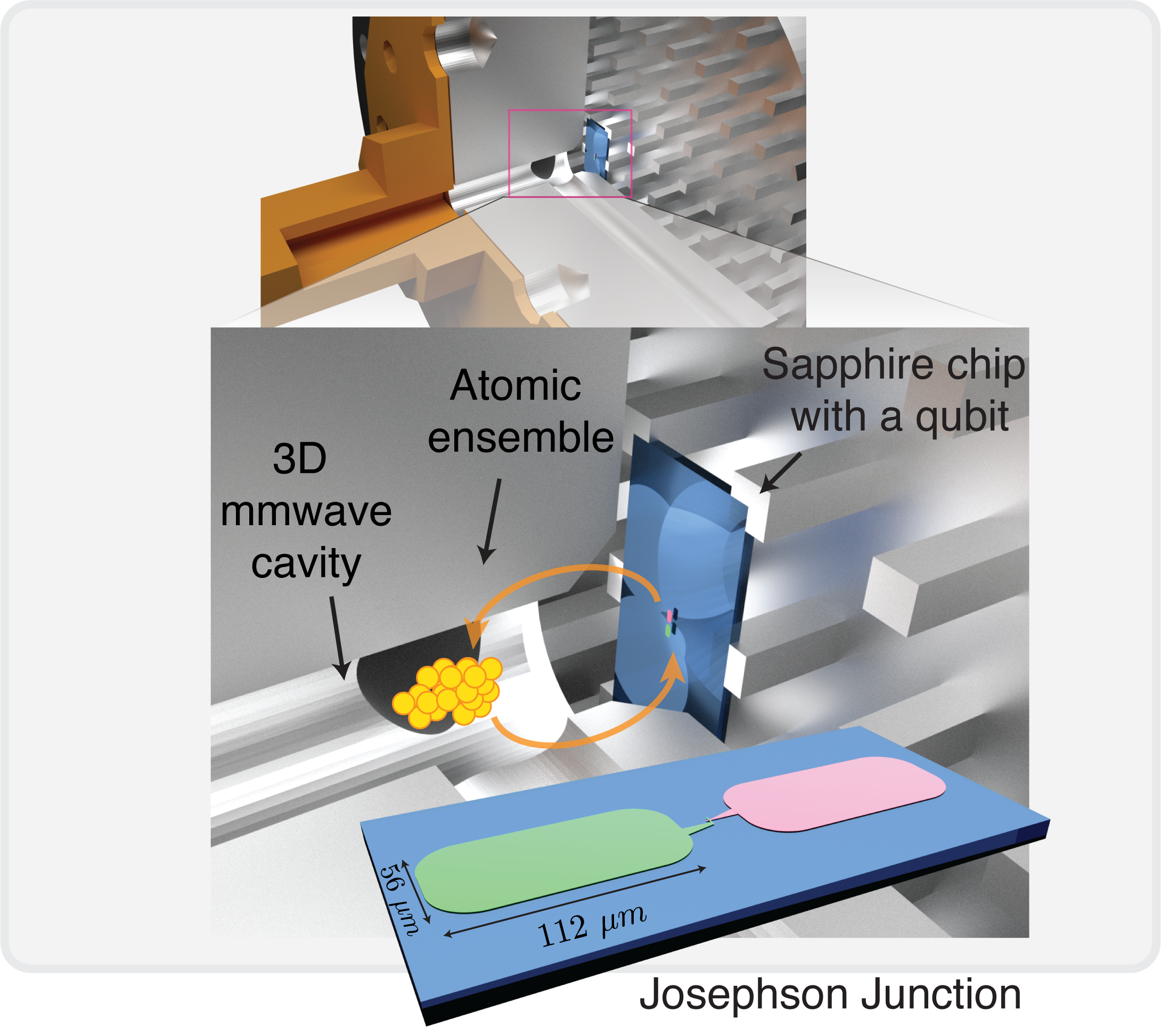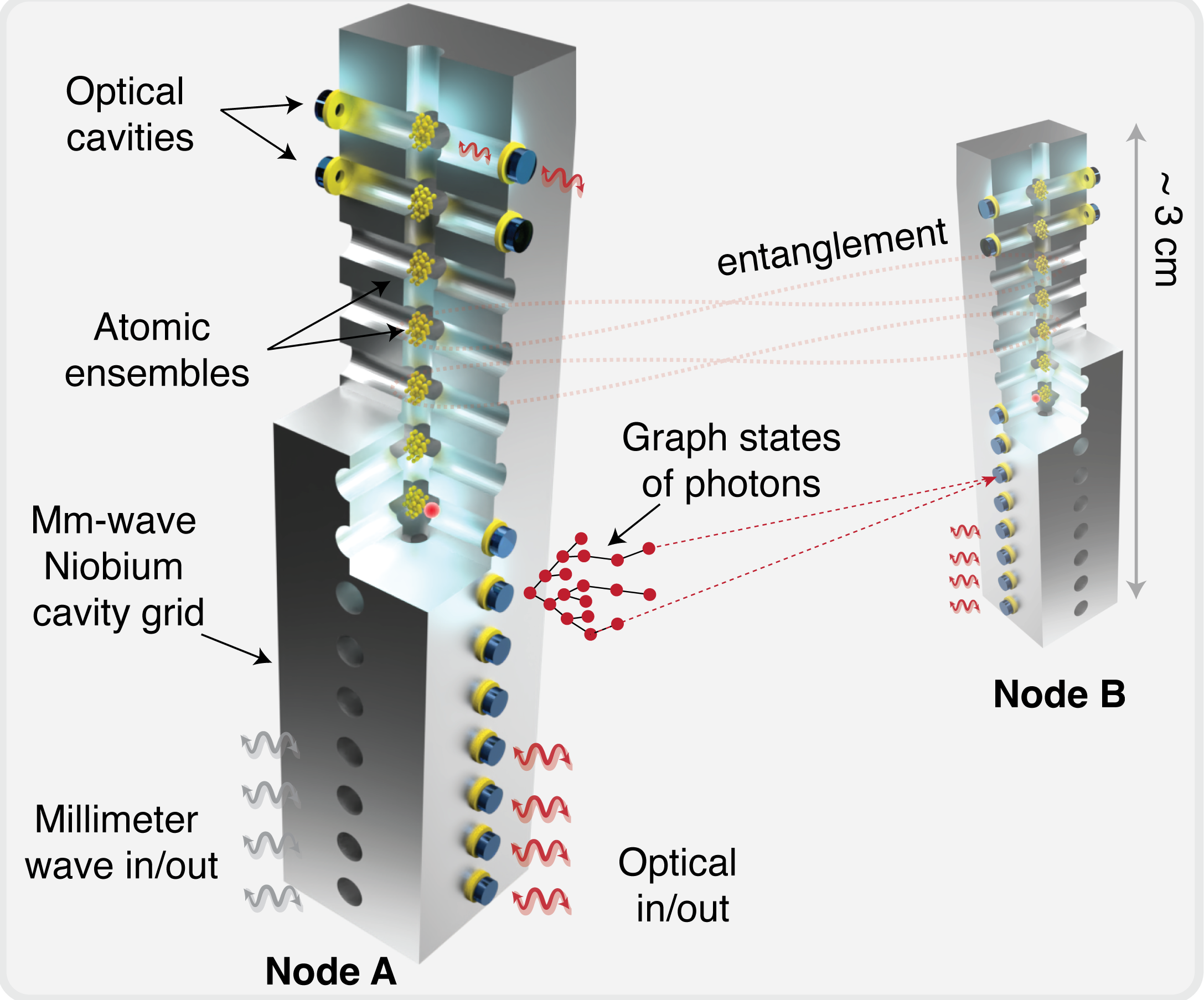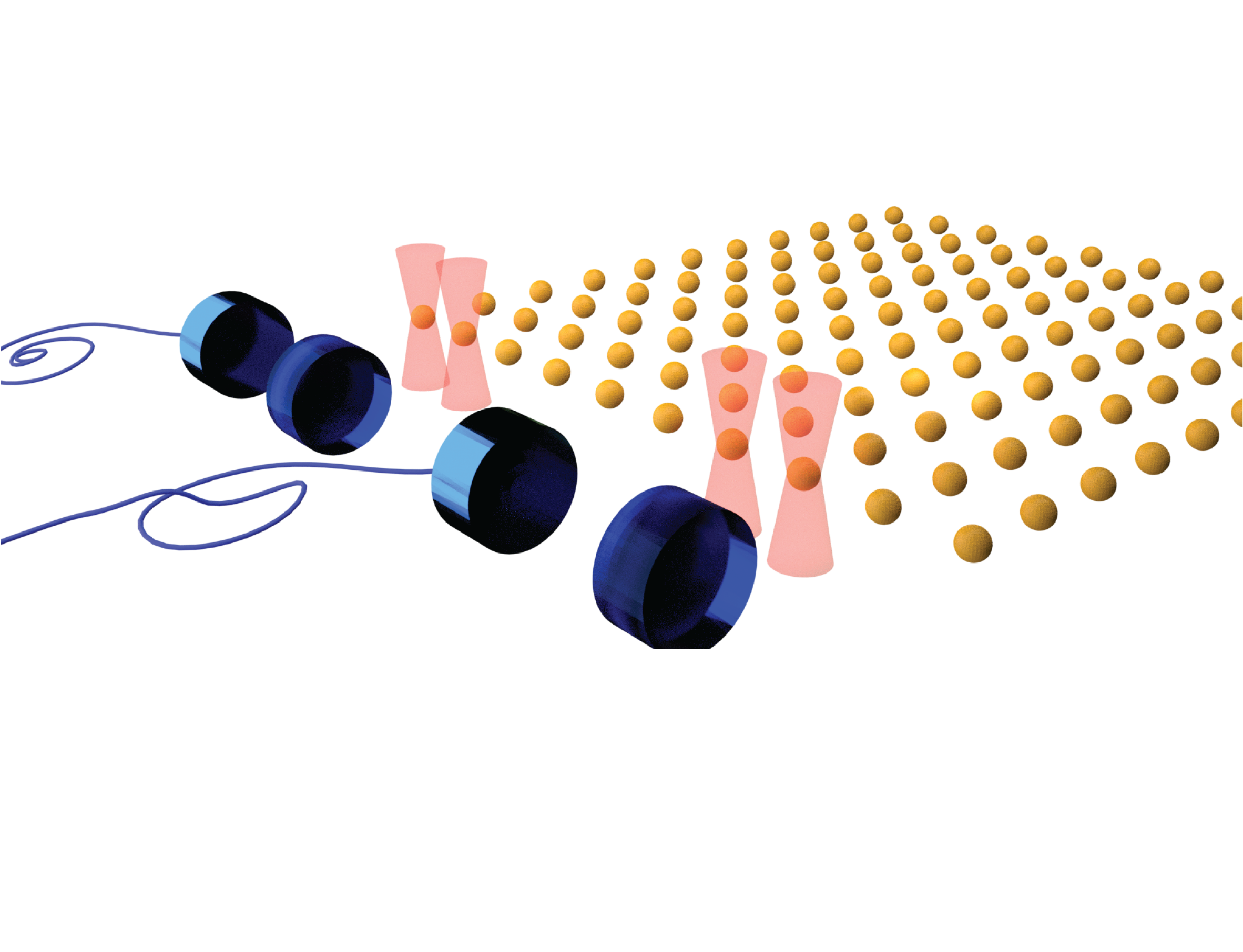Our science
The ability to generate and harness large-scale entanglement is key to unlocking full potential of quantum technology and science. To access this potential we need quantum systems designed and built to interface with each other and the outside world through quantum and classical channels.

Tools
Entanglement
In the last 100 years, entanglement has transformed from a paradox (1930s), to a phenomenon to be observed (1960s), and finally now to a resource to be harvested for powering quantum technology. At short distances, entanglement enables the unique powers of quantum computing. Distributed over large distances, entanglement creates even stranger and more exciting opportunities. In our lab, we find new ways of entangling diverse sets of quantum systems over more complex and distributed geometries to harness the nonlocal weirdness of this resource.
Flying qubits
Interfacing different quantum platforms and distributing entanglement over long distances requires access to flying qubits which can transfer quantum information from one place to another. The qubits that can practically fly the farthest are photons. We use all sorts of photons in our lab, from microwave (5–10 GHz) and millimeter wave (50–200 GHz) to optical (384 THz) and telecom (222 THz). Telecom photons are the most robust since they can travel via fibers at room temperature over 15 km before losing half of their population, as compared to optical photons which only have 700 m.
Transduction
To send and receive the flying qubits without losing the stored information, our platforms must be able to efficiently transduce the quantum information from the photonic mode onto the matter qubits. Quantum transduction is an extremely fragile process, since we cannot clone or copy quantum information. The process of swapping quantum information from one physical system to another has to be protected from loss and noise. This is the ultimate challenge for interfacing quantum systems, one which we tackle both from a fundamental science perspective and engineering creativity.
Platforms
In our group we work with many different quantum platforms since our goal is to get them talking to each other! Some of the systems we are working on right now are trapped neutral atoms and high-frequency superconducting circuits. In the past we have worked on Silicon vacancy (SiV) defects in dimond nanophotonic cavities.

Superconducting circuits and neutral atoms
Millimeter-wave superconducting circuits is a promising platform for quantum computing. The higher frequency of devices and ability to operate at high temperatures hold potential for interfacing with neutral trapped atoms which have mm-wave transitions between their Rydberg states.

Superconducting arrays of cavities coupled to neutral atoms
Superconducting 3D cavities with sub-wavelength mode volumes have extremaly long coherence times and high mode confinement. With arrays of cavities designed in the mm-wave range we are building multi-qubit registers with trapped atoms based on Jaynes-Cumming Hamiltonian.

Atom arrays coupled to optical cavities
Reconfigurable arrays of atoms coupled to optical cavities have the potential to enable complex quantum computational applications with a remote, efficient optical interface. We are exploring novel approaches to enhance light-matter coupling, aiming to improve the rates and fidelities of entanglement generation within this platform.